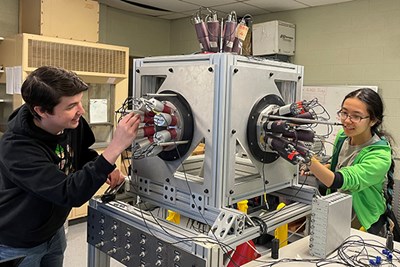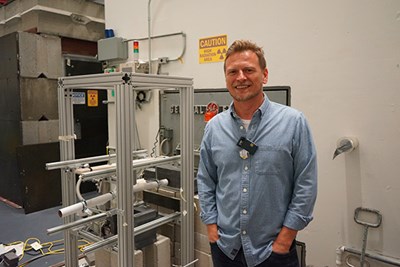Projects, Funded by More Than $1M in Grants, Offer Students Paid Research Experience
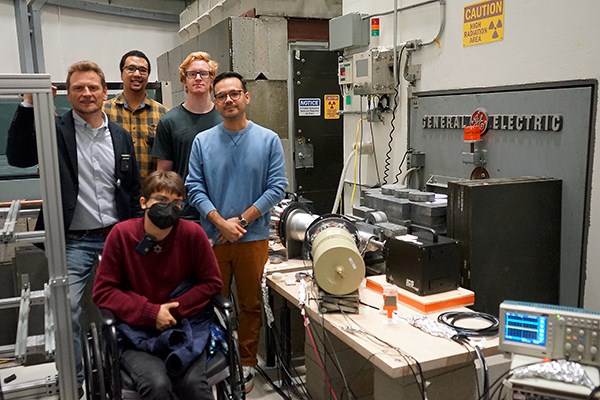 Image by Brooke Coupal
Image by Brooke Coupal
11/03/2023
By Brooke Coupal
With nuclear data playing an integral part in applications ranging from oil drilling to homeland security, it’s vital that it is accurate.
Nuclear data – a collection of parameters derived or directly measured when an isotope of a chemical element undergoes a nuclear reaction – can be used to identify the composition of different samples of interest. For instance, border patrol may use a detector to scan a truck trying to come into the country; data collected from that detector can be compared to nuclear data to show if a chemical isotope associated with a nuclear weapon may be present. Similarly, a detector may be used to analyze the makeup of an oil well to understand which chemicals exist before workers begin drilling.
After analyzing various nuclear data libraries, Physics Asst. Prof. Marian Jandel and his research group, consisting of undergraduate and graduate students, noticed discrepancies between data measurements for multiple elements and their isotopes.
Jandel recently received three grants totaling more than $1 million to revise this nuclear data so it has less uncertainty. Part of the funding will go to pay student researchers.
Hands-On Learning Opportunities for Students
“It’s important for students to get involved in nuclear physics early, because then there’s a higher chance that they will stay in the field,” Jandel says.
Partnering with Brookhaven National Laboratory in Upton, New York, Jandel and his team will generate new reliable datasets for isotopes of copper, nickel and chromium, which are used in space exploration applications, among others.
“The goal is to develop an analysis that would make it easier to measure elements that are targeted for specific applications,” says Jandel, who received a three-year grant from the Department of Energy (DOE) for the project, with $380,000 going to UMass Lowell and $120,000 going to Brookhaven.
The researchers will be analyzing the isotopes in UML’s research reactor. Neutrons will be beamed at samples of the isotopes to induce a nuclear reaction that will then be measured by nearby detectors. This data will be sent to Brookhaven for evaluation before being added to the lab’s National Nuclear Data Center.
UML students working on the project will have the opportunity to visit Brookhaven, where they will further learn how to evaluate data. Researchers at Brookhaven will also visit UMass Lowell to help with measurements.
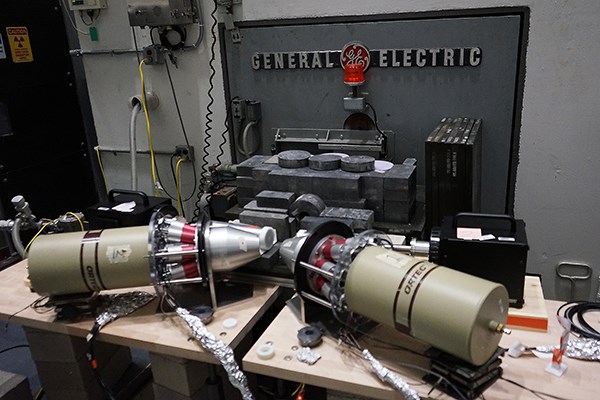 Image by Brooke Coupal
Image by Brooke Coupal
“The whole idea is to bridge national labs and universities,” Jandel says. “We want to create pipelines for students.”
The DOE also awarded Jandel and co-principal investigator Peter Bender, an assistant physics professor, a two-year, $400,000 grant to gather improved nuclear data on manganese. The DOE previously funded the project with a one-year, $188,000 grant.
Manganese is a chemical element that is found in all known living organisms. The human body, which contains about 10 to 20 milligrams of manganese, uses it to make energy and protect cells, according to the National Institutes of Health.
“If you go to Mars and you detect manganese on the planet, then it can actually indicate that there was life,” Jandel says.
A way to find manganese on Mars would be to beam neutrons at the planet and then take measurements of the nuclear reaction. These measurements would be compared to already existing nuclear data to see if manganese is present, making it imperative that the original data is correct.
Jandel and his research group are collecting experimental data on manganese, which they will compare to theoretical data collected from a computer simulation of manganese undergoing a nuclear reaction. Physics master’s degree student Alex Howe has been working on the simulation as part of his thesis.
“Making sure nuclear databases are accurate is vital, especially when there are so many areas that rely on the data,” Howe says. “There’s something meaningful about the possibility that our work is going to end up making things easier for future scientists.”
Computer Simulations Will Aid Data Analysis
Jandel’s research group is also developing computer simulations to support experimental data analysis of nuclear detector setups used by the Texas A&M University-led consortium Center for Excellence in Nuclear Training And University-based Research (CENTAUR). CENTAUR, which recently received $12.5 million from the DOE’s National Nuclear Security Administration, awarded Jandel a 5-year, $425,000 grant for the project. Each year, the grant will fund a graduate student to work full time on the project.
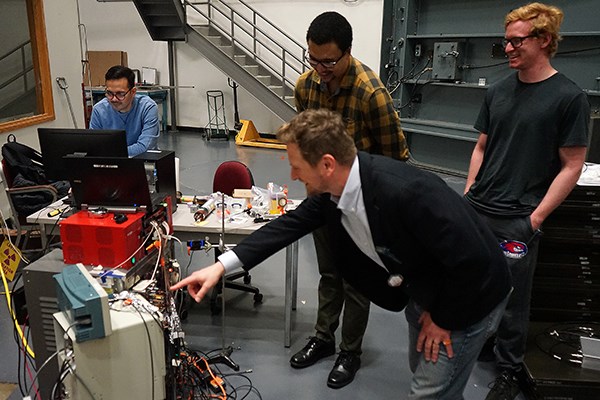 Image by Brooke Coupal
Image by Brooke Coupal
Physics Ph.D. student Hadrick Green ’21 will work on the project for the first year. He began conducting research with Jandel while a master’s student at UMass Lowell. During that time, he interned at Los Alamos National Laboratory in New Mexico, which houses the detectors being used in the CENTAUR project.
“It was my first time working at a national lab,” says Green, who currently works at Massachusetts General Hospital as a medical physics assistant. “It was a really good experience.”
Jandel says he is looking forward to getting more students involved in his research.
“The students receive hands-on experience that involves developing and testing sensors to be implemented in experiments with neutrons,” he says. “They learn how to use numerical methods to analyze large datasets and code algorithms to extract relevant data from the large datasets – a science that is used all over.”

